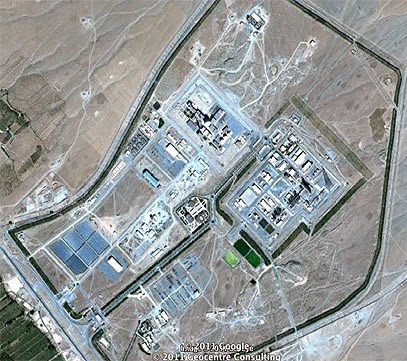I have been blogging about nuclear matters in the Middle East for the past week. Today I am going to talk about Saudi Arabia’s plan for finding alternatives to oil for power generation. They currently generate about sixty gigawatts from oil and gas. Despite being one of the major oil producing countries in the world with vast reserves, Saudi Arabia is well aware of the fact that their supply of oil is finite. They know that they have to develop alternative energy sources before their oil is gone. They are working on alternative sustainable sources such as solar and plan to have about twenty four gigawatts of sustainable energy by 2020 and fifty gigawatts by 2032.
In 2010, a Saudi royal decree announced that “The development of atomic energy is essential to meet the Kingdom’s growing requirements for energy to generate electricity, produce desalinated water and reduce reliance on depleting hydrocarbon resources.” They set up an agency called the King Abdullah City for Nuclear and Renewable Energy (KA-CARE) to handle all nuclear affairs including the construction and operation of nuclear reactors, the disposal of nuclear waste and the signing of any treaties with other countries involving nuclear issues. The Saudis retained several international consulting firms to help them finds sites and develop bid requests for nuclear work.
In 2011, Saudi Arabia revealed plans for the construction of sixteen nuclear reactors by 2030 with an estimated capacity of eighteen gigawatts. The estimated cost of the reactors was projected to be around eighty billion dollars. By 2013, the estimated capacity has been raised to twenty two gigawatts and the cost estimates had risen to over one hundred billion dollars. The estimated seven billion dollar cost of such reactors is higher than in other parts of the world because Saudi Arabia is so hot. A timeline in 2013 projects that construction of the first reactors would begin in 2016.
In early 2011, Saudi Arabia signed a nuclear cooperation agreement with France. In late 2011, Saudi Arabia signed a nuclear research and development treaty with South Korea. China and Saudi Arabia signed an agreement in 2012 for nuclear plant development, reactor research and access to nuclear fuel fabricated in China. GE Hitachi Nuclear Energy and Westinghouse Toshiba signed deals with Exelon Nuclear Partners in 2013 to develop bids for constructing the Saudi reactors. Areva, France’s nuclear company, is also interested in bidding on the Saudi contracts. Negotiations are also underway with Russia, the U.K. and the U.S. for nuclear cooperation.
The Saudis plan to build two reactors in the next ten years. Then they intend to build two more each year until they have sixteen in all by the year 2030. They project that the new reactors will be able to supply about twenty percent of Saudi Arabia’s electrical power needs in 2030.
A friend of mine spent ten years working for Saudi Aramco in Saudi Arabia. One of his major complaints about working for the Saudis was that Saudi citizens had to be in charge of all the departments even though many of them were not technically competent and some were very casual about showing up and doing anything at all. One report about the Saudi plans raises the issue of training Saudi citizens to operate the nuclear reactors. Given my friend’s experience, I hope that the Saudis who operate the reactors actually know what they are doing.
King Abdullah City for Nuclear and Renewable Energy (KA-CARE) logo:






